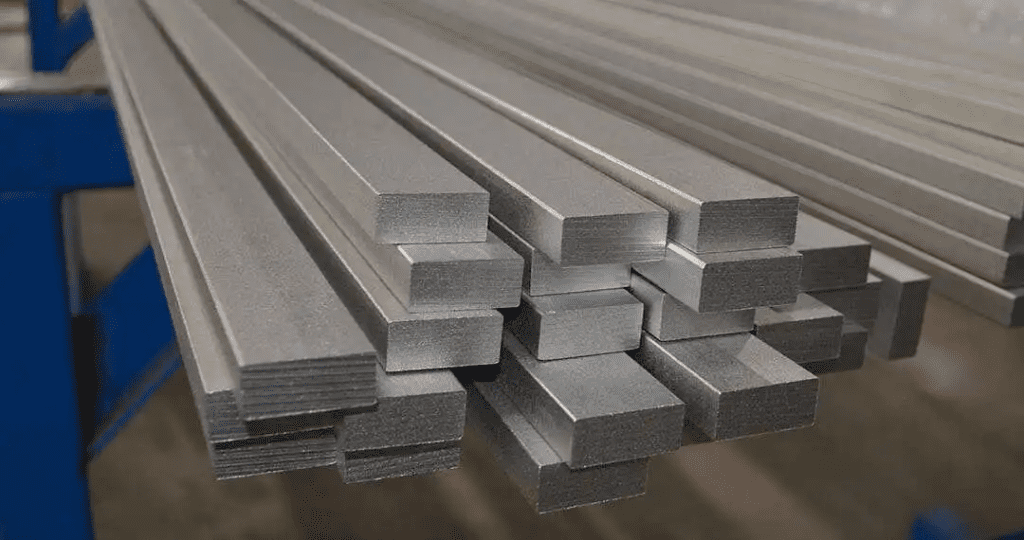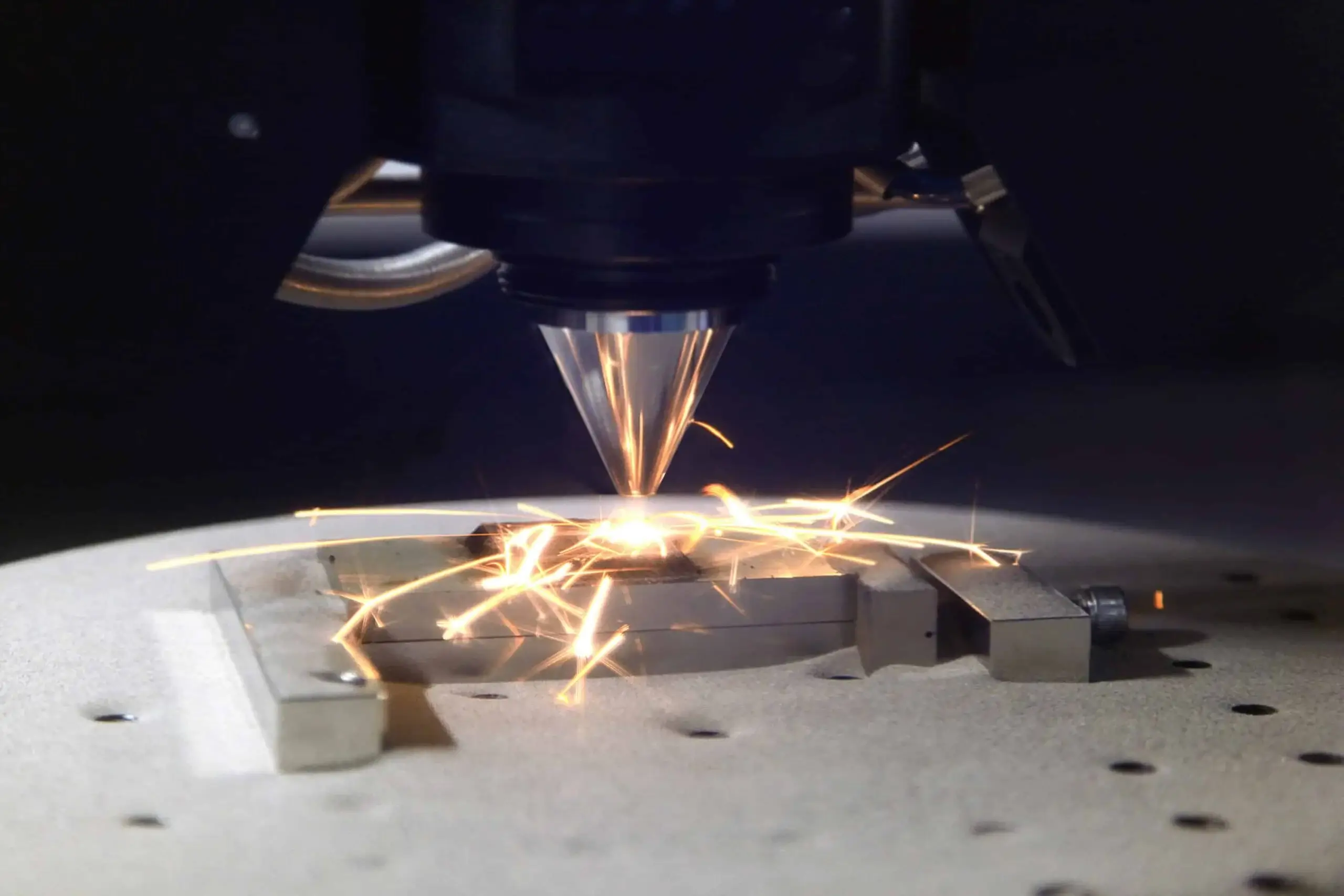Additive manufacturing, more commonly known as 3D printing, is one of the most exciting new technologies of the twentieth century. In principle, it has the power to put high-quality manufacturing into every home. The reality, however, is that most practical applications require a higher degree of precision and quality control than most 3D printers are capable of outputting directly out of the box. This has led to 3D printers being the darling of modelers and hobbyists and requiring multiple prints and patience from more serious users.
One of the ways to enhance the quality and precision of additive manufacturing is the use of aluminum MIC-6 tooling plates for 3D printing beds. MIC-6 aluminum can help improve the 3D printing process in two ways. As a cast aluminum, it possesses unique qualities of uniform flatness across its surface. This allows for a more precise level of control over the final print, as there are fewer distortions and imperfections in the printing bed surface that can be reflected in the final print. Aluminums in general also have excellent thermal properties that allow for the surface to be heated quickly and evenly for a quicker print start and better adhesion to the bed. Here is where MIC-6 also stands out, as the casting process keeps stress from building in the metal as it is heated and maintains dimensional stability across repeated heating and cooling. The only drawback to MIC-6 tooling plate for 3D printing beds is that it is currently nearly impossible to find. Many professional prototyping shops and home hobbyists alike are scrambling to find alternatives.
Understanding the Flatness of MIC-6
The most desired property of the MIC-6 tooling plate for 3D printing and machining is flatness. In fact MIC-6, is often advertised as a super flat aluminum plate. In terms of cast aluminum plates, flatness is something of a misnomer. There is no such thing as absolutely flat, and MIC-6 tooling plate’s reputation for being super flat is actually due to two distinct and separate measurements that need to be defined before its unique properties and those of its competitors can be fully understood. These are:
- Surface finish: A surface finish is the measure of the deviations found across that surface. It can be measured in one of two ways. The first and most intuitive is to measure the distance from the highest peak to the deepest valley in the surface and provide a peak to valley (PV) measure. The second is the root mean square (RMS), which measures the deviation of the actual surface from an ideal absolutely flat surface
- Flatness deviation: The flatness deviation is the measure of divergence from true parallel between two surfaces. In the case of MIC-6 and other aluminum tooling plates, this is a measure of the maximum deviation between the top and bottom surface of the plate from true parallel.
The surface finish of MIC-6 aluminum is 20 RMS or better, a number that translates to +/- .005 inches, 1/200 of an inch, approximately 127 micrometers, or a little under the width of a human hair across the entire surface of the plate. Given the standard plate widths directly from the manufacturer start at 48.5 inches and go up to 60.5 inches, or over four and five feet respectively, these are indeed very flat plate surfaces.The flatness deviation for MIC-6 aluminum is also about .005 inches for plate ⅝ inch in thickness and up and is only slightly less for thinner ¼ to ½ inch plates at .015 inches, or 3/200 of an inch. Once again, although these fall short of absolute flatness, they are still exceptionally flat across the width of a manufacturer’s plate, and even more so across the average 3D printer’s 300 mm x 300 mm.
At first glance, MIC-6 advantages seem unbeatable. However, there are competing cast aluminum tooling plates that have similar qualities of surface finish and flatness deviation. These materials even exceed MIC-6’s qualities in terms of tensile and yield strength, their ability to conduct heat, and even their surface grain quality.
|
Buy Certified High-Quality Metals for Industrial Solutions |
||
|
New Aluminum |
New Steel |
New Stainless Steel |
 |
 |
 |
| Reliable supply: Consistent, certified aluminum stock you can trust. High-quality material: Superior-grade aluminum for precision needs. Custom cuts: Accurate cuts down to thousandths of an inch. |
Durability and strength: Reliable for projects needing long-lasting, tough materials. Cost-effective: Quality steel that offers strength without breaking the bank. Custom cutting: Precise cuts tailored to exact needs with top-tier cutting tools. |
Sustainability: Highly eco-friendly as the most recyclable metal on earth. High durability: Resistant to corrosion and wear, ensuring long-lasting performance. Custom precision cuts: Tailored to your specifications with quick, accurate results. |
Alternatives to MIC-6 Tooling Plate for 3D Printing Beds
A great deal of MIC-6 aluminum’s popularity as a tooling plate stems from the fact that for many it is the original cast aluminum. It first debuted in the 1960s, and because it’s been on the market for more than 50 years, it has become synonymous with cast aluminum for many people. However, the science of metallurgy has marched on, and there are many other types of cast aluminum that have emerged in the past few decades that can match MIC-6 in many of the most important qualities for tooling plates, as can be seen in the chart below.
| Manufacturer | Trade Name | Alloy Range | Surface Finish | Flatness Deviation | Yield
Strength |
Thermal Conductivity |
| Arconic | MIC-6 | 7000 | 127µm or better | +/-0.005 | 15 ksi | 82 btu/ft2 hr° F |
| PCP | Alca 5 | 5083 | 127µm or better | +/-0.005 | 18 ksi | 69.3 btu/ft2 hr° F |
| Alimex | ACP 5080 | 5083 | 3 µm or better | +/-0.0039 | 16-18.8 ksi | 63 – 81 btu/ft2 hr° F |
| Vista | ATP-5 | 5083 | 127µm or better | +/-0.005 | 18 ksi | 81 btu/ft2 hr° F |
| Alpase | K100-S | 5083 | 127µm or better | +/-0.005 | 18 ksi | 81 btu/ft2 hr° F |
That the yield strength of nearly all alternatives to MIC-6 is higher than MIC-6 itself is the property that most obviously leaps out to the casual observer. However, it is probably not the most applicable property when looking for an alternative to MIC-6 tooling plate for 3D printing beds. A printer bed that can support the weight of an African elephant without yielding is extraneous to most additive manufacturing. Thermal conductivity, or how quickly a printer bed can be warmed to the desired temperature, is much more applicable. The greater thermal conductivity of most MIC-6 tooling plate alternatives for 3D printing offers a time savings in preprint preparation when a warmed heater bed is needed.
Another key factor to consider when looking for alternatives to MIC-6 tooling plates for 3D printing beds is the type of aluminum alloy used in the casting. MIC-6 is a 7000 series aluminum. This series of aluminum is notoriously unweldable due to being prone to stress cracking under heat. Aluminum alloys in the 5000 series, from which most cast aluminum alloy alternatives to MIC-6 are derived, can be welded through most common arc welding methods. This means that these plates can be repaired if scratched or gouged or even just worn down from use and then machined back to true. This is an important consideration for production environments that cannot afford to shut down and wait for delivery of a new plate because someone was careless when freeing a 3D print from the bed. While MIC-6 remains a standard in cast aluminum and likely will for some time, alternatives to MIC-6 tooling plate for 3D printing or other industrial manufacturing processes are well worth considering.
Cast Aluminum Alternatives from a Reputable Metal Supplier
Whether you need cast aluminum alternatives to MIC-6 tooling plate for 3D printing beds or machining, Industrial Metal Service is a top provider of new and remnant aluminum cut precisely to the required dimensions and delivered when you need it.
Call us Monday through Friday from 7 a.m to 4 p.m. PST and from Saturdays from 8 a.m. to 12 p.m. PST to find out how we can solve your aluminum needs with our three-day turnaround and affordable nationwide shipping.
 Angle
Angle Cast Plate
Cast Plate Diamond Plate
Diamond Plate Flat Bar
Flat Bar Plate
Plate Round Bar
Round Bar Square Bar
Square Bar Square Tubing
Square Tubing Round Tubing
Round Tubing Angle
Angle Channel
Channel Diamond Plate
Diamond Plate I Beam
I Beam Round Bar
Round Bar Sheet
Sheet Square tubing
Square tubing Round Tubing
Round Tubing Rectangular Tubing
Rectangular Tubing Plate
Plate Rectangular Bar
Rectangular Bar Rectangular Tubing
Rectangular Tubing Round Bar
Round Bar Sheet
Sheet Square Bar
Square Bar Square Tubing
Square Tubing
